
What to Know About Functional Gain Testing in Hearing Aid Verification
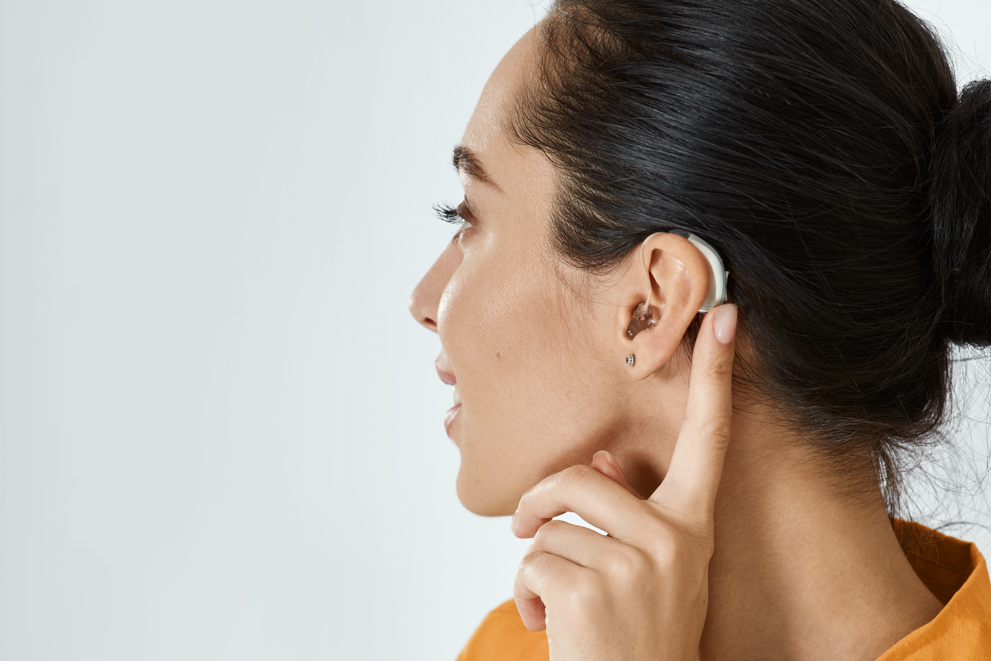
Functional gain testing in hearing aids measures how much a person’s hearing thresholds have improved with their hearing aids. Functional gain testing is measured using the following steps:
1. Unaided Hearing Test: The person's hearing thresholds are measured in a soundproof booth without any hearing aid, establishing a baseline of their hearing ability.
2. Aided Hearing Test: The hearing test is repeated with the hearing aid in place. The person listens to the same sounds, and the thresholds are measured again.
3. Calculation of Functional Gain: The functional gain is the difference between the unaided and aided thresholds. For example, if a person can hear a sound at 50 dB without the hearing aid and at 30 dB with the hearing aid, the functional gain is 20 dB.
The Purpose of Functional Gain Testing in Hearing Aid Verification
The purpose of functional gain testing in hearing aid verification is to assess and validate the effectiveness of a hearing aid in improving a user's hearing ability. This includes:
- A way to objectively verify how much a hearing aid improves hearing thresholds across different frequencies to determine if the hearing aid is delivering the expected improvements across the speech frequency range required for effective hearing rehabilitation.
- Allowing identification of the specific frequencies where the functional gain is higher or lower. The hearing aid can then be fine-tuned to ensure it effectively meets the user's needs and provides better sound quality and speech understanding.
- Usefulness in demonstrating the benefits of the hearing aid to the user and in setting realistic expectations of what can be achieved with the hearing aid.
- The provision of a documented measure of hearing improvement that can be compared over time or with different hearing aids. This allows the aid's performance to be measured at various time points and performance with other hearing aids to be compared.
Factors Affecting Functional Gain Testing in Hearing Aids
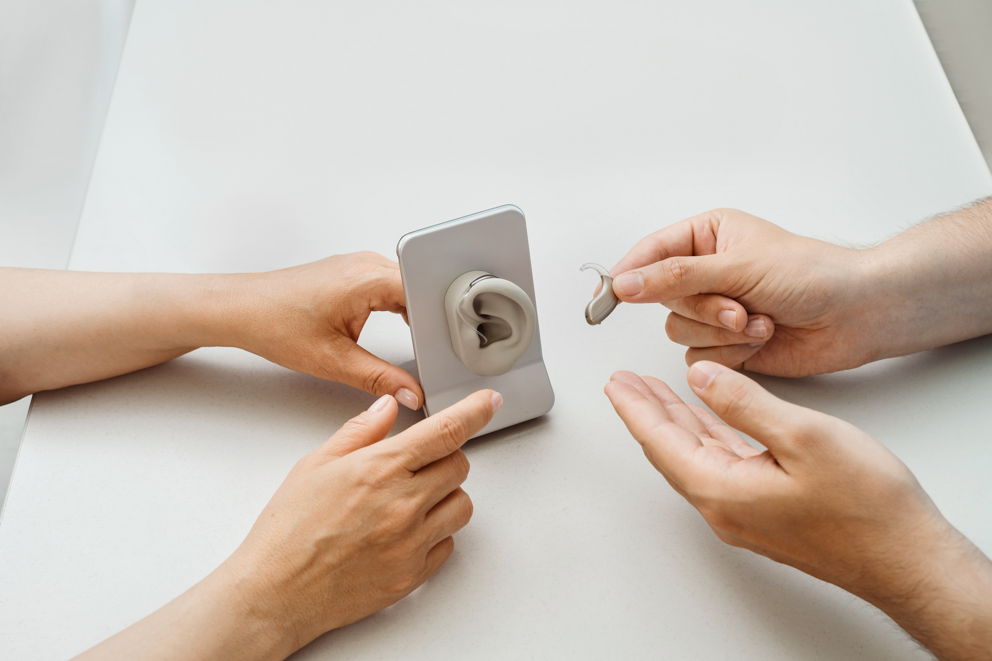
As with any measurement, it is essential to be aware of the factors that can affect the measurement and potentially result in an inaccurate result. Factors which affect functional gain testing in hearing aids include:
Ambient Noise
Ambient noise can interfere with functional gain measurements by masking test tones, elevating thresholds, and causing inconsistent results. To ensure accurate and reliable functional gain measurements, conducting the tests in a controlled, quiet environment, such as a soundproof booth, is essential. This minimizes the impact of ambient noise and provides a more accurate assessment of the hearing aid’s effectiveness.
Normal Hearing Regions
Functional gain measurements can be underestimated in areas of normal or near-normal hearing. This is because ambient noise in the room and internal noise in the hearing aids can affect thresholds. Internal noise in the hearing aid can even cause the aided threshold to be more elevated than the unaided threshold, making it appear like the person has lost hearing at those frequencies with their hearing aids.
Compression in Hearing Aids
Compression can cause the functional gain measurement to appear lower than it is. This can lead to overamplifying certain sounds, making the hearing aids too loud for the patient. Turning the compression off can mitigate this issue, but then the measurements do not record what the hearing aids do when the compression is turned on.
Choice of Stimulus in Functional Gain Measurements
Using pure-tone stimuli in functional gain testing in hearing aids is problematic because they can create standing waves in a sound field. The standing waves can alter the signal intensity, resulting in inaccurate measurements. To get around this, warble tones or narrow-band noise are often used as the preferred type of stimuli. However, these are less frequency-specific.
Measuring Functional Gain in Different Hearing Aids

Hearing aids vary in how they process sound, which affects functional gain measurements, specifically whether the hearing aid is linear or non-linear.
Functional Gain in Linear Hearing Aids
Linear hearing aids provide the same amount of gain for each input level. That is, they will provide X dB of gain to a sound input of 30dB and the same gain to an input of 60 dB. This approach to gain provision can be problematic because the loudness growth for people with sensorineural hearing loss differs from those with average hearing loss. This phenomenon is called loudness recruitment.
As a result, giving a patient enough gain to make soft sounds audible can cause loud sounds to be too loud. Functional gain testing in hearing aids only allows for one input to be measured. This can give an accurate presentation of the gain for any input level in a linear hearing aid because it is always the same and limited only by its maximum output.
Functional Gain in Nonlinear Hearing Aids
Nonlinear hearing aids provide lower gain levels as the sound input increases once it goes above a trigger point, known as a knee point. This provides patients with more usable and comfortable sound outputs as it compensates for loudness recruitment that occurs with hearing loss. However, functional gain only allows for measurement as one level—the softest level the person can hear.
This means that for higher sound input levels above the compression knee point, the functional gain results will not accurately reflect how much amplification is provided to the patient. Thus, a functional gain measurement is less useful with a non-linear hearing aid than a linear one.
Impact of Hearing Loss Severity on Functional Gain
Functional gain testing can be complex for people with severe to profound hearing loss for several reasons:
1. Measuring unaided losses in a sound field can be problematic if the person has a profound hearing loss. Further, efforts must be made to protect the hearing of anyone else in the room who may be exposed to the sound.
2. For profound hearing losses, a limit to threshold improvement may be expected with hearing aids. This may result in functional gain testing being unhelpful in determining the usefulness of the hearing aids to the person.
3. When testing at higher inputs, a functional gain measure with current non-linear hearing technology is more likely to be complicated by compression in the hearing aids, resulting in measurements indicating thresholds are lower than they are.
Applications of Sound-Field Testing in Functional Gain
While functional gain testing can sometimes be conducted using headphones, the most common methodology involves the use of sound-field speakers in a sound-field. Auditdata Measure is designed to support functional gain testing through sound-field speaker systems. This method is particularly useful in scenarios where traditional verification techniques, such as probe microphone measurements, may not be feasible. By utilizing sound-field speakers, we enable precise, real-world testing of hearing aids in environments that mimic everyday listening conditions, ensuring that users receive optimal amplification. This approach is especially beneficial for patients who:
- Cannot sit still for other forms of verifying hearing aids – particularly for active children.
- Is unable to tolerate the probe tube required for other forms of hearing aid verification in their ear, or if the insertion of the probe tube causes feedback, or the tube itself gets squashed by a tight-fitting earmold.
- Has a hearing device other than hearing aids, such as bone conduction aids or cochlear implants.
Practical Tips for Conducting Functional Gain Testing

Before starting functional gain testing, the hearing aid should be programmed appropriately for the patient, and the patient should be instructed on what will happen and how the testing works.
Preparing the Test Environment
The test environment setup is critical to getting accurate functional gain results.
- The test environment must be controlled and free of ambient noise. For this reason, functional gain testing is often done in a sound-proof booth.
- Functional gain testing using a sound field requires an appropriate and calibrated setup. The sounds are played via a loudspeaker before the hearing aid wearer. The speaker must be calibrated not only in the room it will be used in but also for the location where the person being tested will be in the room.
- For functional gain measurements, the speaker is usually located directly in front of the hearing aid wearer.
Interpreting Functional Gain Results
Functional gain testing can determine the softest sound a person can hear at a given frequency, with and without the hearing aid. This allows one to see how soft a sound the person can hear with their hearing aids and how much it has improved compared to without their hearing aids.
The results from functional gain testing show how much the hearing aid wearer’s ability to hear soft sounds in a controlled test environment has improved. The greater the functional gain (unaided—aided threshold), the more significant the improvement. Frequency specific information can be used to adjust the hearing aids. If there has, for example, been a lower-than-expected increase in the functional gain in the mid-frequencies, then the gain for those frequencies can be increased for better access to speech test results.
Limitations with Functional Gain Testing
Functional gain testing is often criticized for use with today’s hearing aids when other verification options exist. It is criticized because the testing environment, such as ambient noise and the internal noise of the hearing aids, can affect the results.
Measurements of functional gain also depend on the hearing aid wearer's cooperation and attentiveness, as they must listen for the softest sounds they can hear. Further, the sound booth set-up must be as it was when it was calibrated to be accurate. If the hearing aid wearer is sitting in the wrong position or angle, it will not be correct. There is also an issue of there not being a set standard of what functional gain is desired. It is possible to see if thresholds have improved. Still, it is unclear from the testing whether they are optimized – this can lead to differing interpretations of whether the results are satisfactory.
Another reason why functional gain is criticized is it cannot provide information about the gain the hearing aid offers with different input levels. With most hearing aids now being non-linear, this information is valuable in determining if the gain being provided is appropriate for soft, medium, and loud sounds.
Functional Gain vs. Real Ear Measurements

Like previously stated, functional gain is a behavioral measure of how much a hearing aid improves a person's ability to hear soft sounds, reflecting real-world benefits. Real ear measurements (REMs), on the other hand, are objective tests to assess how well a hearing aid amplifies sound within the ear canal. It allows the hearing aid fitting to be personalized using the patient’s ear. This is done by measuring the sound pressure level (SPL) generated by a hearing aid in the user’s ear canal. REMs aim to verify that the hearing aid delivers the appropriate amount of amplification based on the user’s hearing loss, as prescribed by fitting formulas like NAL-NL2 or DSL.
REMs consist of several types of measurements, executed independently:
- Real-Ear Unaided Response (REUR): This method measures the natural resonance of the ear canal without a hearing aid in place.
- Real-Ear Aided Response (REAR): Measures the sound pressure level in the ear canal with the hearing aid in place and turned on.
- Real-Ear Insertion Gain (REIG): Calculated by subtracting the REUR from the REAR, this measurement shows the gain provided by the hearing aid.
- Real-Ear Occluded Response (REOR): This measure measures the sound in the ear canal with the hearing aid in place but turned off, indicating how much sound is blocked by the hearing aid.
Today, typically the REAR measurement is used as the objective measurement of sound pressure level in the aided ear canal, and is used for fitting of hearing aids.
Verification of Hearing Aid Amplification Using REMs
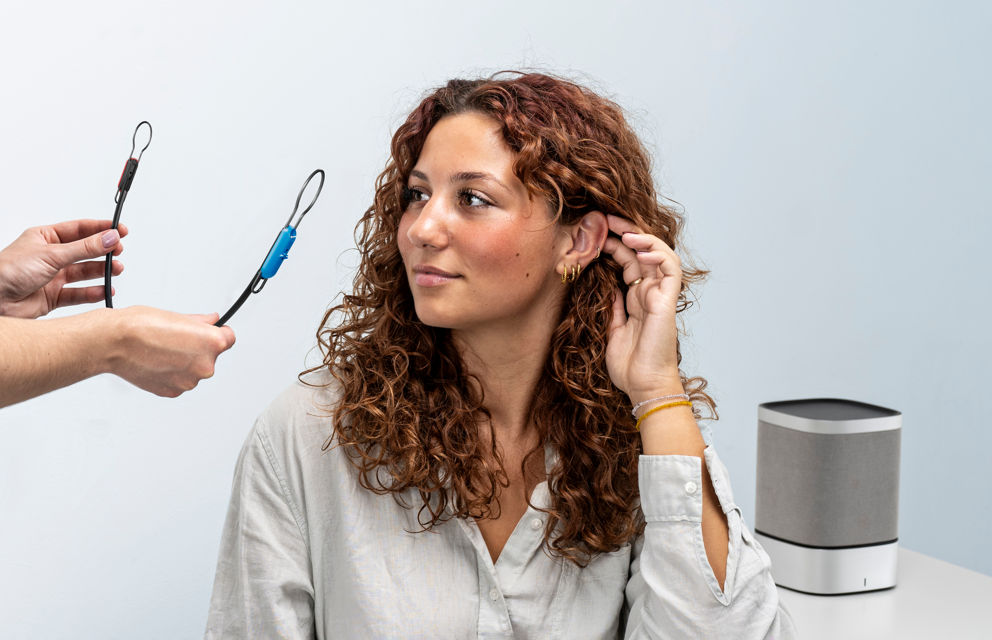
A standard REM to measure the REAR is performed as follows:
- Probe microphone insertion: A small probe microphone is placed into the ear canal, close to the eardrum. This microphone measures the sound levels inside the ear canal.
- Hearing aid in place: The hearing aid, with the wearer’s initial settings, is inserted into the ear over the probe microphone.
- Sound presentation: A loudspeaker in front of the user presents a series of test sounds (such as the ISTS signal, speech, or noise).
- Measurement: The probe microphone captures the amplified sound inside the ear canal, allowing the audiologist to measure the SPL at various frequencies with the hearing aid activated, i.e. the REAR.
- Adjustments and re-measure: The hearing aid's settings are adjusted using the hearing aid manufacturer’s fitting software, until the measurement matches the prescribed target, with re-measuring throughout the process.
Benefits of Using REMs
Real Ear Measurements offer several advantages compared to functional gain measurements, including:
- There is a target response that the measured response can be compared against. This means the person adjusting the hearing aid knows what should be being achieved.
- Real ear measurements give more frequency-specific information rather than being restricted to the frequencies the audiometer can test at. This allows better fine-tuning of the hearing aids.
- Unlike functional gain, real ear measurements allow measuring the gain provided for different sound level inputs. This enables an evaluation of the compression of the non-linear hearing aids used today.
- Real ear measurements provide more accurate results for hearing losses that are close to normal for some frequencies or very severe. This makes them more appropriate for a wider variety of patients.
- As an objective test, REMs can be more accurate and not subject to individual factors such as the person's attention, like functional gain measurements can be
For these reasons, where possible, real-ear measures are the preferred method for verifying the gain in a hearing aid compared to functional gain.
Measure Wireless
Experience the Future of Hearing Care with Wireless REM Probes
Experience wireless fittings with our first fully Wireless REM Probe solution.
This innovative tool is designed to simplify Real Ear Measurements and provide a better experience for both patients and clinicians. It connects effortlessly with our stylish, stackable Measure audiometer and fitting unit, providing a solution that maximizes clinic space, improves diagnostic accuracy, and enhances patient care.
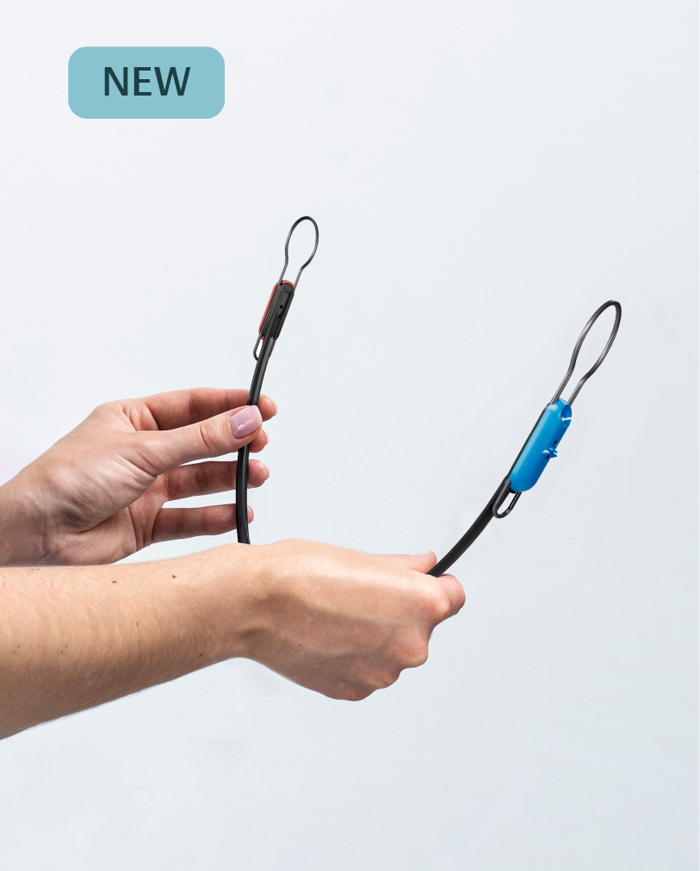
Other Blogs You Might Enjoy:

Comprehensive Hearing Test vs. Hearing Screening: Understanding Results, Implications, and Limitations
Explore the role of a comprehensive hearing test as compared to a quick screening. How accurate are hearing tests, and what kind of results can we expect?
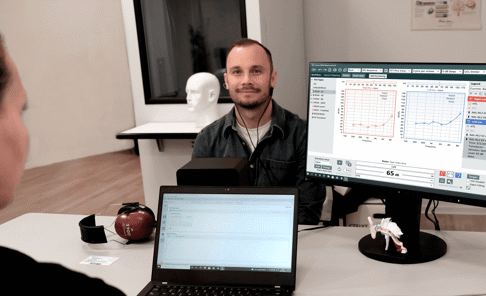
Are Real Ear Measurements Necessary?
Real Ear Measurements (REM) – also called Probe Microphone Measurements (PMM) – are considered the gold standard in hearing aid fitting and verification, allowing audiologists to determine whether a hearing aid user is receiving the precise level of amplification needed at every frequency to maximize their hearing. This blog explains how REM can improve customers’ hearing, as well as drive better business outcomes and serve as a key differentiator for hearing clinics.

Common Audiometry and Hearing Loss Myths
Hearing loss is a prevalent condition that can significantly impact an individual's quality of life, yet misconceptions surrounding audiometry tests and hearing loss persist. This article aims to debunk common myths, providing clarity on the audiometric process and the nature of hearing impairment. By dispelling these misconceptions, we can foster a more informed and understanding approach to hearing health.
Don't Miss Out On the Latest Insights On Audiology
Sign up today to receive exciting updates, tips, and the latest newsletters from Auditdata.





